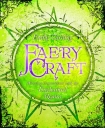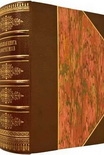Faery Craft: Weaving Connections with the Enchanted Realm Carding, Emily (first color ebook reader txt) 📖

Book online «Faery Craft: Weaving Connections with the Enchanted Realm Carding, Emily (first color ebook reader txt) 📖». Author Carding, Emily
And from you specifically, John, I’d love to hear how working with the glyph has changed your perceptions of Faery.
J: The great glyph was a gift that really started me on this aspect of the work. It was the first “in” thing they showed me, and when I got to use it, it opened ways between our worlds that were more powerful and direct than any I had known before. I continue to use it, and it has become a constant part of the work I do with Faery beings. They tell me they are very happy that so many people are using it today and look forward to welcoming all who are of good intention to their world.
For more information, visit www.hallowquest.org.uk.
Faery Wicca
Faery Wicca is sometimes found referring to covens and individuals practicing a version of the Wiccan tradition, both initiatory and noninitiatory, with a strong emphasis on Faery beings and elementals and usually within a Celtic or pseudo-Celtic framework. Wicca itself is a popular magickal tradition, which, though relatively modern, has its roots in the grimoires, folk magick, and practices of ancient Greece, Rome, and Egypt. There is a strong aspect of polarity and balance within this tradition, as Wiccans work with a God and a Goddess, often putting much emphasis on the Divine Feminine. Wicca involves working with the elements and their guardians, and encourages a deep respect for nature and her hidden dimensions, so to work closely with Faery within this tradition is a natural extension.
Radical Faeries
“We have been a separate people…drifting together in a parallel existence, not always conscious of each other, yet recognizing one another by eyelock when we meet here and there as outcasts…Spirit-people in the service to the Great Mother…Shamans…rhapsodes, poets and playwrights, healers and nurturers…visionaries…rebels.”
Harry Hay speaking at the Spiritual Conference
for Radical Faeries in 1979
The Radical Faeries are more of a movement than a group or tradition, based very much around gay sexuality and the freedom of expression, as well as the love of nature and the spirit of the land. Their roots may be found in their first gathering, the Spiritual Conference for Radical Faeries, which was organised by Harry Hay and John Burnside in 1979 and has since grown massively in numbers and reputation. Members of the Radical Faeries place prime importance on the celebration of individuality and “gay spirit,” defining themselves as a race and culture apart and freeing their “inner faerie.” Radical Faeries embrace the word queer as part of their identity, covering both gay men and women as well as transgender and bisexual, seeking to be liberated from what they see as the constrictive expectations and regulations of a heterocentric society. Fey (as some members also call themselves) celebrate the Celtic Pagan festivals in accordance with the wheel of the year as popularised by Wiccan-influenced paths. They hold events and meetings all over the world, and a number have bought land in wild places, such as Faerie Camp Destiny in Vermont, in order to provide retreat centres for members to pursue their magickal and spiritual paths away from the rest of the world.
Lisa Hunt, “Lord of the Greenwood”
(www.lisahuntart.com,
reproduced with kind permission of US Games Systems, Inc.)
Otherkin, Elven Spirituality, and the Silver Elves
One of the most recent groups to emerge within the Faery community is that of the Otherkin movement. Not a tradition as such, people who call themselves Otherkin believe that they are nonhuman souls, most commonly of the Faery races but also of magickal creatures such as dragons or animals such as wolves, born into human bodies. Whilst a number of these cases can be put down to pure fantasy or a psychological need for escapism, there is reason to give credence to the possibility that nonhuman souls could be born into a human life, particularly if your belief system includes reincarnation. Many believe that these souls have elected a human life to help bring humanity into a new age of connection and understanding.
Though the Otherkin movement arose as recently as the 1990s, its origins lie a little further back, in 1970s California, with the first group of people who dared to publicly come out as being “other,” practicing nature-based magick and embracing an elven identity as daughters (though they were both men and women) of the great Earth Goddess. I interviewed a magickal couple known as the Silver Elves, who discovered their own elven identities through contact with the Elf Queen’s Daughters in the 1970s, as I wished to learn more of their fascinating way of life.
How would you describe your path?
The Elven path is unique in many ways to each individual since it is about the discovery and development of each person’s individual nature. That is why we created the word s’elf to indicate the link between being an elf and one’s true self.
We believe in The Magic, which we define as the Infinite Potential that is the source of all things. And while most people look to escape the phenomenal world and return to the world of spirit, we elves see ours’elves as here to instil the phenomenal/material world with spirit, to master it and to create Elfin-Faerie Paradise on earth and among the stars.
So what is the elven way? It is the path that each elf chooses for hir (his or her) own s’elf. There are no rules, no requirements, other than be true to one’s own s’elf. If one is true to one’s s’elf, then the elf





Comments (0)